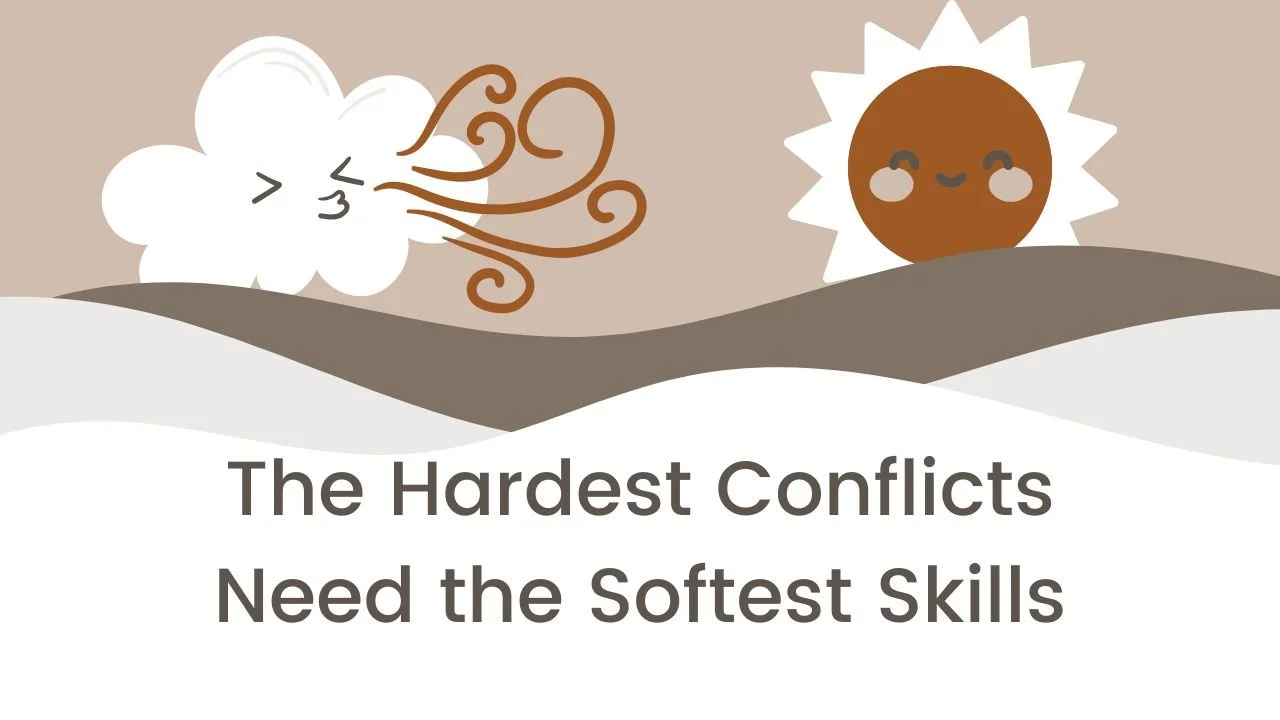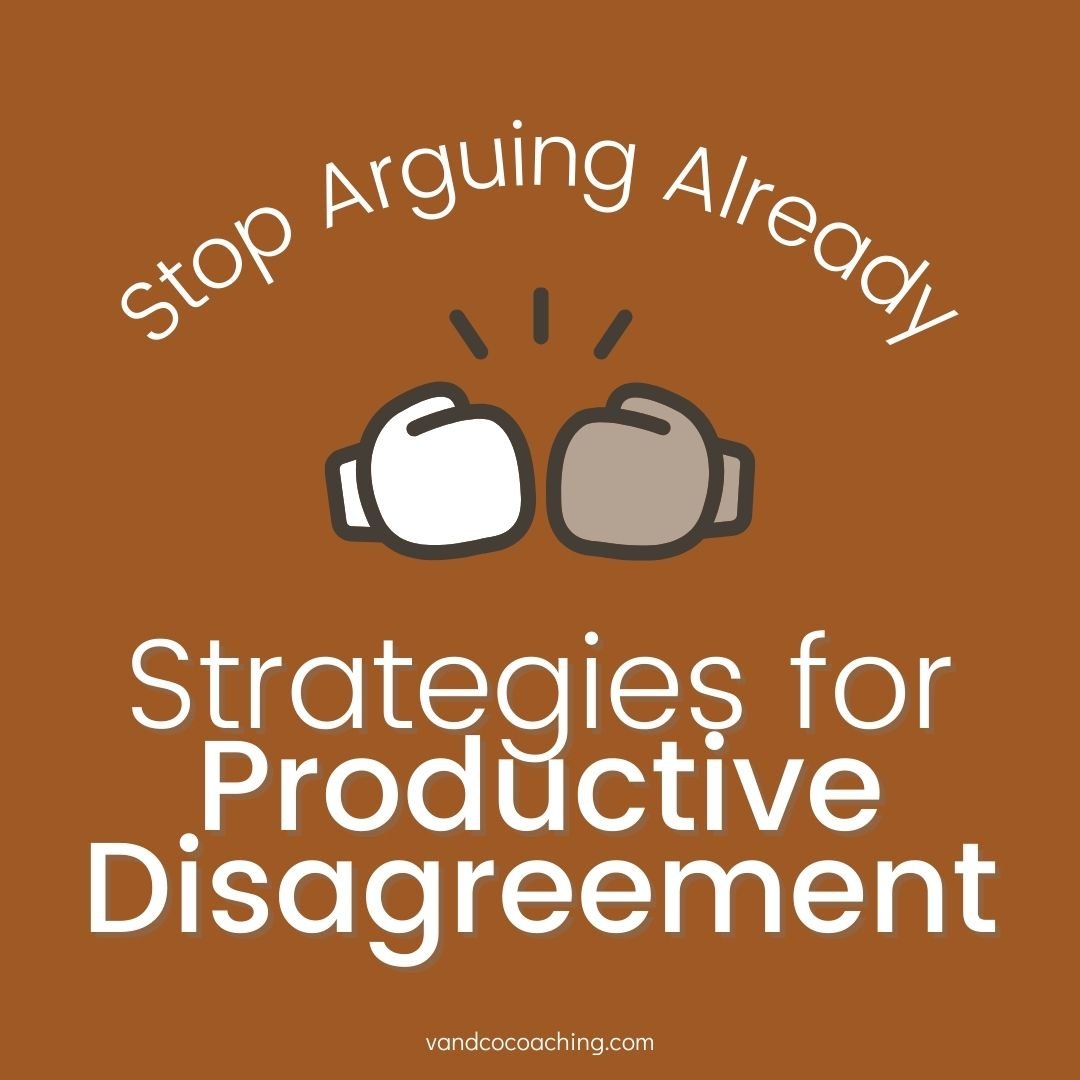Emotional Intelligence: The Hardest Conflicts Need the Softest Skills
What a 2,500-Year-Old Story Teaches Us About Persuasion
Quick story before we dive in:
In Aesop’s fable, The North Wind and the Sun, the two forces compete to see who can get a traveler to remove his cloak. The North Wind blows furiously, but the traveler only clutches it tighter. Then, the Sun shines gently… and the traveler removes his cloak on his own.
The moral? Warmth and empathy are more persuasive than force.
I’m back with the second installment of our Navigating Conflict series, and this banger of a fable is the perfect setup for today’s theme: understanding and emotional intelligence are your most effective tools in tough conversations. (And no, we’re not literally trying to get people to remove their cloaks, but we are learning how empathy creates openings that force never can.)
Last time, we focused on you and how conflict resolution begins with understanding your own feelings, needs, and what success looks like for you. Now, we’re turning the lens outward. You'll learn how understanding the other person—their emotions, motivations, and needs, can completely change the dynamic. When we approach conflict with compassion instead of force, we preserve relationships and often stand a much better chance of getting our own needs met, too.
Here’s what we’ll cover today:
How to develop empathy by understanding the other person’s positions, interests, and needs.
Why validation (without necessarily agreeing) is a game-changer.
Using emotional intelligence to balance what you want with what they want—and move toward collaborative outcomes.
Cloaks on, or cloaks off, let’s dive in!
Empathy in Conflict: Why Understanding the Other Person Changes Everything
When we're locked in conflict, it’s easy to focus only on what we want, what we feel, what isn’t working. But conflict always involves another human being, complete with their own emotions, fears, and needs. When we take the time to understand their world, everything starts to shift.
One of the biggest insights from negotiation theory is this: what people say they want (their position) often hides a deeper, more important truth (their interest or need).
For example, if a colleague insists, "We have to stick to my deadline," their position sounds rigid. But if you dig a little deeper, you might find that their underlying interest is reliability, teamwork, or perhaps not letting down a client. When we recognize that their demand is tied to a larger human need, such as respect, autonomy, or belonging, we can respond more effectively.
Even when someone's behavior looks messy, stubborn, or hurtful, there's almost always a deeper need underneath it. It might be a need for safety, recognition, clarity, or connection. Recognizing that doesn’t mean you excuse bad behavior—it simply gives you a more useful lens to work with.
From Blame to Curiosity: When we shift from "They're being difficult" to "What are they needing or fearing?" we move from reacting to responding.
Curiosity opens up new possibilities that force and blame will never reach.
Validation ≠ Agreement (And Why It Matters)
One of the biggest myths about conflict is that if you listen to or validate someone, you're somehow "giving in" or agreeing with them. Not true.
Validation is simply acknowledging another person's experience or feelings. It’s saying, "I see you," — not necessarily, "You're right."
Why Validation Matters: An essential piece of every conflict is the basic human need to be heard. When people feel understood, their defenses start to lower. Their impulse to push, prove, or posture often softens because they're no longer fighting to be seen.
Think about a time when someone truly listened to you without interrupting, correcting, or trying to "fix" you or the situation. Even if they didn’t agree with you, didn’t their understanding feel like a huge weight lifted?
How to Validate Without Agreeing:
Here are a few simple ways to offer validation:
“I can see why that would be frustrating.”
“It sounds like you really value ____.”
“I hear that this is important to you.”
“It sounds like you’re feeling [emotion] because you want/need [need].”
(Example: “It sounds like you’re feeling overwhelmed because you need more clarity.”)“I can understand that if you perceived X, it would make sense to do Y.”
Notice that none of these statements say, "You're right and I'm wrong."
They're just reflecting understanding.
Key takeaway:
Validation creates connection. It lowers defenses. It invites collaboration.
And it never means abandoning your own needs or truth.
Communication Strategies: Getting More of What You Want by Understanding What They Need
Understanding Others Isn’t Giving Up Your Needs
Understanding others is actually one of the smartest ways to get your needs met. When people feel heard and understood, they naturally become more flexible, generous, and open to creative solutions—solutions that can meet your needs too. When someone senses you’re genuinely interested in their experience (even if you don’t fully agree), they’re far more willing to cooperate, negotiate, and collaborate toward a better outcome for everyone.
Example 1:
Your coworker is defensive about a tight deadline. Instead of arguing, you listen and discover they’re anxious about being blamed if things slip. By validating their fear ("I can see why you'd want to avoid that"), they relax—and now you have the space to suggest a timeline adjustment that works better for you, too.
Here’s how it might sound in real life:
Coworker: "We have to stick to the original deadline. If we miss it, I’ll look bad to leadership."
You: "I get it—you want to make sure everything reflects well on your work. That makes total sense."
You (sharing your side): "At the same time, I’m feeling concerned about rushing the quality on my end. I want to make sure we deliver something strong."
You (finding middle ground): "What if we built in a quick check-in halfway through? That way you can show progress early, and I have enough space to polish the final deliverable."
Instead of butting heads, you’ve now created a third option that serves both of you.
Example 2:
You’re asking a friend for help moving apartments, but they seem hesitant.
You: "I’m feeling overwhelmed thinking about moving day, and I’d really love some support to make it manageable. Would you be open to helping for just a couple of hours, if that works for you?"
You name your feeling (overwhelmed), your need (support), and make a clear, doable request—while respecting their autonomy.
Often, when people feel choice rather than pressure, they’re more likely to say yes — or at least work with you toward something that works for both of you.
Why Sharing Your Feelings and Needs Helps You Get More Cooperation
When you use language that honestly expresses how you feel and what you need—without blame or demand—you tap into common humanity. The other person can see your side more clearly and naturally want to find a solution with you. It shifts the conversation from "me vs. you" to "how can we both get what we need?"
Hot Tips for Balancing Needs in Conflict:
Honor Both: You can care about their needs and stay true to your own.
Ask, Don’t Assume: Check in instead of guessing:
"Can you tell me what’s most important to you here?"Share Your Side Too: After listening, share your own feelings, needs, and interests with warmth and clarity:
"I’m feeling stressed because I value delivering quality work."
Final Thoughts on Persuasion vs. Force
The Traveler bears down against the dominating force of the North Wind. Such resistance is a natural response to the fear that their needs won’t be met–the anxiety of losing their cloak. But most aren’t consciously aware of this until the warmth of the Sun disarms them. They’re safe to let the cloak fall and continue forward.
Consider this if you initially approach conflict as an opposing wind. In work especially, we’re cautious about being nudged into a caregiver role that assumes we must concede. But clearer heads (and sunnier skies) prevail when dealing with someone who has resorted to conflict. We herald in the Sun by:
Consciously acknowledging their hidden need/fear
Expressing our need honestly, vulnerably, and without compromise
Introducing alternative ways forward or offering choice
Sharp negotiation skills and truly satisfying conflict resolution never involve one person wrestling their needs from another. In Part One, we saw how our brains are wired to interpret conflict as a threat. Ultimately, your awareness and presence in moments of conflict don’t just help you manage this; it exudes a warmth and understanding that disarms others.















